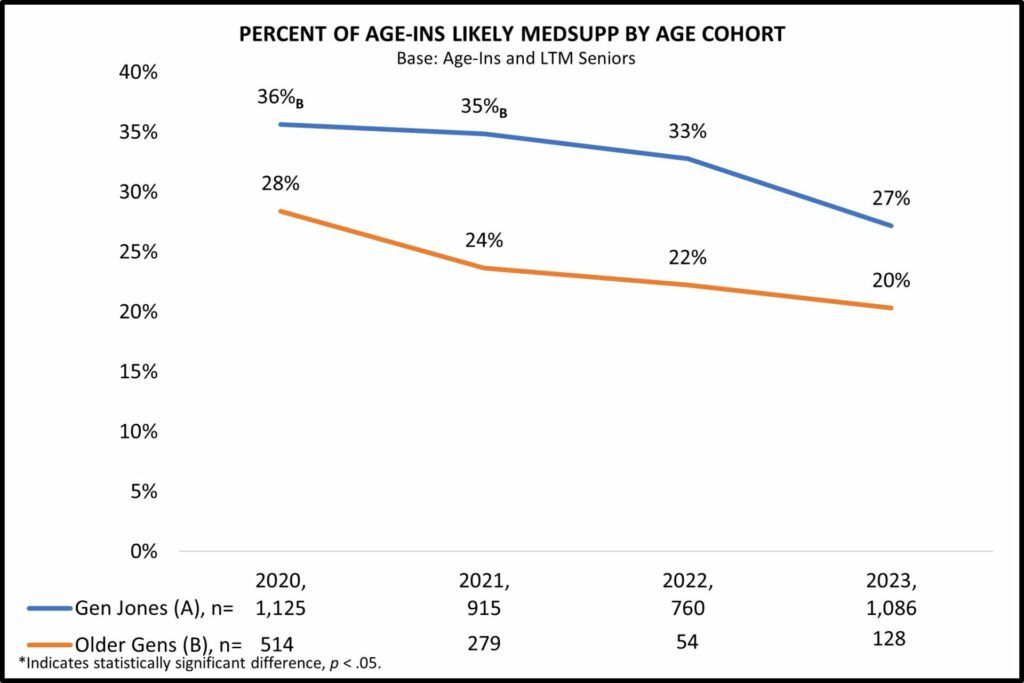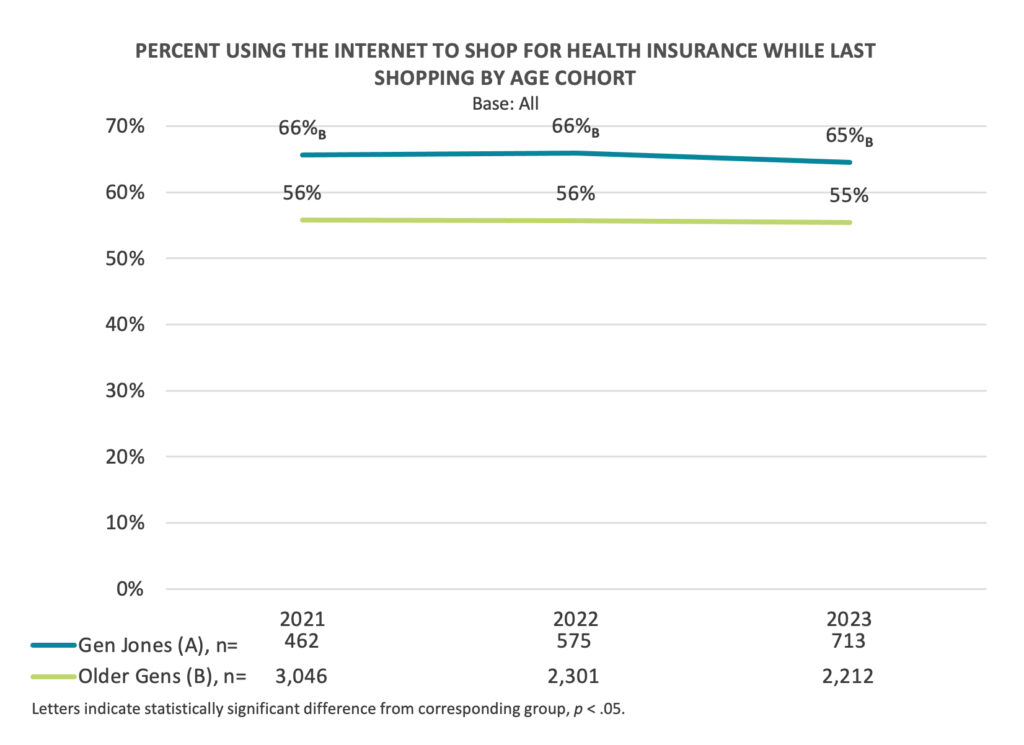
By Brandon Dunk
On a day-to-day basis, demographic shifts are nearly unnoticeable. But in the long run, it’s also important to remember that demographics slowly shift the landscape much like a river. Hence the phrase, “Demography is destiny,” and its use as postmortem of those who failed while refusing to recognize shifts in their consumers and constituents.
At Deft, our task is to uncover important changes in how consumers, agents, and carriers interact and behave to help prepare our clients for today’s health insurance landscape. Our clients depend on our insight to stay ahead of impactful changes.
One of the key demographic shifts affecting Medicare today is the introduction of Generation Jones: a little-known subgroup of the Baby Boomer generation. Born starting in 1954 and extending through 1966, this generation is named for “keeping up with the Joneses” as they sought to maintain affluence while facing more economic hardship than the generation before (a pattern that has continued). Identifying the generational impact of the Jones demographic on Medicare is critical: each day, more of Generation Jones enters Medicare, with the first age-based enrollments beginning in 2020.
The Boomer Generation: A Tale of Two Market Segments
The Boomer Generation—one that media, marketers, and millennial meme-makers alike have felt they had categorized so well—is really made up of two generations: the Early Boomer Generation, and Generation Jones. Born starting in 1946, Early Boomers are already well-accustomed to Medicare and remain the key demographic for insurers. However, while Generation Jones shares some similar experiences with their neighbors, they have also experienced a different and more difficult economy.
Both Early Boomers and Generation Jones were born during the baby boom and found themselves growing up in a rapidly changing cultural landscape, including key moments in the civil rights movement, second wave feminist movement, and the moon landing. These cultural revolutions persist across the two generations.
While the economic experiences of Early Boomers and Generation Jones appear similar from the wealth both generations possess, Generation Jones experienced more uncertain economic conditions. Early Boomers entered the workforce in the middle of the post-World War II economic expansion, leaving nearly a decade to expand their careers before the next recession. Generation Jones, on the other hand, was not as lucky; while participating in many of the same cultural events as kids, this generation began working during the stagflation of the 1970s. That means Generation Jones enters Medicare eligibility as a generation more familiar with economic hardship.
Generation Jones was defined by the struggle to obtain a similar level of affluence while dealing with a slowing economy.
A New Generation of Age-Ins
As Generation Jones started aging into Medicare in 2020, the first members of this generation have already passed through the Full Social Security Age-In period. This means that Generation Jones now makes up part of every Age-In category, including all Initial Enrollment Period (IEP) and Full Social Security (FSS) Age-Ins. Deft has been able to track Generation Jones through all of these periods.
It’s hard to attribute any specific change in consumer behavior to a specific generation, but analyzing the impact of Generation Jones entering Medicare eligibility is especially difficult due to the COVID-19 pandemic. At the same time, this difficulty makes the need for identification and awareness of any impact all the more important.
Does Generation Jones differ in their Medicare decisions from older generations? We took a look at how Generation Jones compared to older generations by examining one of the key trends from Deft’s Medicare Age-In Study. The chart below shows how likely plan choice among Age-Ins we surveyed has changed over time. Each year has a different mix of IEP Age-Ins, FSS Age-Ins, and LTM Seniors in each generation. 2020 featured all IEP Age-Ins for Generation Jones, while in 2023 all Age-Ins in older generations were LTM Seniors.

Across multiple years, Age-Ins in Generation Jones have said they are more likely to choose MedSupp than those in older generations.
The new generation of Age-Ins is an eclectic mix of cultural experiences and economic realities that may mean volatile changes in what consumers demand out of Medicare. Other important findings in Deft’s Medicare Age-In Study—such as the increasing percentage of seniors not enrolled at age 65—may also be impacted by Generation Jones. And with Generation Jones making up a larger percentage of Medicare Eligibles each year, understanding differences in today’s Age-Ins is a critical part of understanding the future of the Medicare landscape. Deft’s Medicare Age-In Study provides key updates on this market so you can adapt quickly to these changes and cultivate success.
Generation Jones: The First Digital Generation
While adoption of digital technology increases as time passes, Generation Jones may also have more digital experience than their Early Boomer counterparts. With widespread use of computers in the workplace beginning in the late 80s and early 90s, Early Boomers would have been in middle adulthood (their 30s and 40s). These boomers were already well into their careers. In contrast, Generation Jones would have been in their 20s and 30s—likely some of the first adopters of the new technology, and increasingly so in the years ahead.
Like it or not, much of today’s world is digital. With Early Boomers having less practical experience in the digital landscape, Generation Jones may have different digital preferences for how plans are selected, care is delivered, and carriers reach customers. As Medicare shifts to Generation Jones, plans will need to reconsider their digital touchpoints with consumers.
We looked at Deft’s Medicare Digital Health Study data to see if Generation Jones differed from older generations in their internet use rates while shopping for Medicare. The chart below shows that from 2021 and 2023, Generation Jones had a higher rate of using the internet to shop for health insurance than older generations.

Our Medicare Digital Tools Study provides an in-depth look into the digital lives of Medicare consumers today to help the industry better understand and respond to key trends. Understanding the digital trends taking root today will likely be critical for understanding the impact of the pandemic’s online shift and Generation Jones.
In the next decade, the impact of Generation Jones on Medicare will only increase. Deft is here to help you and your organization stay ahead of that impact.